News From China
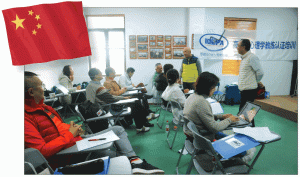 By Toby Tse, USGTF-China Representative
By Toby Tse, USGTF-China Representative
We Conducted the first USGTF International Golf Psychology Association certification and training course on March 19 and 20. Training started at 8:30 a.m. and finished at 6:30 p.m., 10 hours each day. It covered the five sections, including all the drills and tests. Each section took approximately 3 1/2 hours to complete, with 2 1/2 hours teaching, a half-hour working on drills, and a half-hour on test papers.
Ten candidates registered and nine attended, with one missing due to work. Eight candidates passed and got certified, with one who failed and is attending the next course, including the no-show candidate.
 The two-day course was quite heavy and tight in timing. The students were loaded with tons of materials and information. We taught with a PowerPoint presentation of some 200 slides covering bullet points, and a hard copy handout of the full content was given to each student, with some 60 pages printed on both sides. The course was conducted in the Chinese language.
The two-day course was quite heavy and tight in timing. The students were loaded with tons of materials and information. We taught with a PowerPoint presentation of some 200 slides covering bullet points, and a hard copy handout of the full content was given to each student, with some 60 pages printed on both sides. The course was conducted in the Chinese language.
It took us more than two years to prepare the course. The most time-consuming jobs were the Chinese translation and preparation of the PowerPoint slides, where we had to pick the key points which were bell-ringing and had to search the pictures and photos for all the names mentioned. Due to cultural differences and the late start of golf in China, most Chinese students had no idea of those who were featured, including U.S. presidents, ancient philosophers, sport psychologists, famous sport coaches, and the older generation of golfers, even though they were in the Hall of Fame and had substantial influence and achievements. We had to show them the photos, histories and achievements of these people so that they would accept them as credible sources.
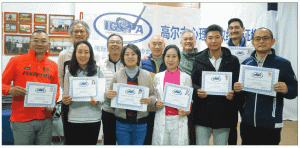 Conclusion – the course is well organized and prepared with valuable information and insight to prepare the attendees to be better players and coaches, and to re-engineer the way they think, play and teach.
Conclusion – the course is well organized and prepared with valuable information and insight to prepare the attendees to be better players and coaches, and to re-engineer the way they think, play and teach.
Due to cultural differences, we will be making some changes to the program, including mentioning some Chinese golfers. In any case, we won’t make drastic changes and will keep the original context and framework in its totality.
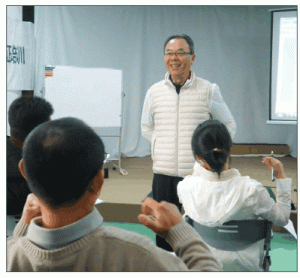
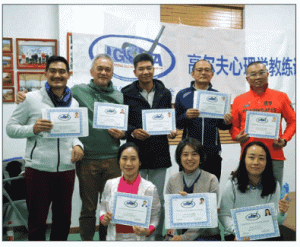


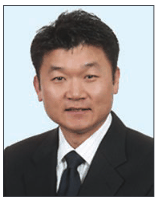 Brandon Lee, president of USGTF-Korea, hosted the USGTF-Korea National Awards 2018 dinner on December 16, 2018. He invited 50 people who have been the most dedicated to the development of the USGTF-Korea federation and the Korean golf industry for 2018. He also awarded the 2018 Achievement Award of USGTF-Korea to two winners, the Certificate of Recognition for Top 10 Teachers of USGTF-Korea for 2018 and the 2018 Best Teacher Award.
Brandon Lee, president of USGTF-Korea, hosted the USGTF-Korea National Awards 2018 dinner on December 16, 2018. He invited 50 people who have been the most dedicated to the development of the USGTF-Korea federation and the Korean golf industry for 2018. He also awarded the 2018 Achievement Award of USGTF-Korea to two winners, the Certificate of Recognition for Top 10 Teachers of USGTF-Korea for 2018 and the 2018 Best Teacher Award.
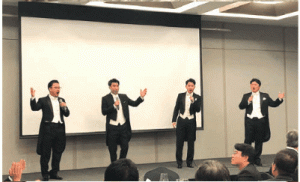
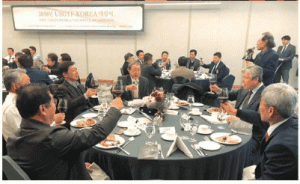
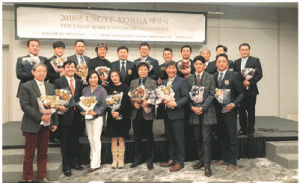
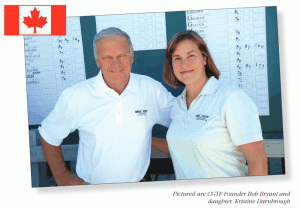 It has been 25 great years growing the game of golf in Canada! Times have changed and so have we. Reflecting back on how our federation grew and competed before the regular use of the internet and social media is astonishing. The administration team of Bob Bryant and Kristine Darnbrough, along with our pioneer members and wonderful facilitators, truly deserve a great “thank you” for their efforts, support and contributions!
It has been 25 great years growing the game of golf in Canada! Times have changed and so have we. Reflecting back on how our federation grew and competed before the regular use of the internet and social media is astonishing. The administration team of Bob Bryant and Kristine Darnbrough, along with our pioneer members and wonderful facilitators, truly deserve a great “thank you” for their efforts, support and contributions!
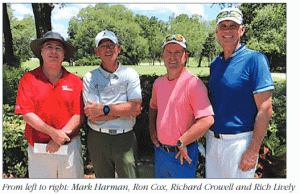 Mark Harman made a statement that he is still a force to be reckoned with at GlenLakes Country Club in Weeki Wachee, Florida, this past May. The reigning World Cup champion from Ridgeland, South Carolina, set a Southeast Region Championship scoring record of seven under par to best Ron Cox of Henderson, Tennessee, by five shots. Richard Crowell from Pensacola, Florida, and Rich Lively of Rockledge, Florida, took third and fourth, grabbing the balance from the $1,200 purse. Thanks goes out to GlenLakes head pro Tom McCrary, who has hosted us for several years.
Mark Harman made a statement that he is still a force to be reckoned with at GlenLakes Country Club in Weeki Wachee, Florida, this past May. The reigning World Cup champion from Ridgeland, South Carolina, set a Southeast Region Championship scoring record of seven under par to best Ron Cox of Henderson, Tennessee, by five shots. Richard Crowell from Pensacola, Florida, and Rich Lively of Rockledge, Florida, took third and fourth, grabbing the balance from the $1,200 purse. Thanks goes out to GlenLakes head pro Tom McCrary, who has hosted us for several years.  USGTF member Walt Abraham, head golf coach of Athenian High School in Danville, California, led his squad to the BCL-East league round-robin regular season title and also the league post-season tournament title. The team finished 9-1 in match play and next heads to the Division 2 championship tournament. The league title marks the seventh time in Abraham’s 11 seasons as head coach that Athenian has taken that honor. Athenian fields a young squad of three freshmen, one sophomore and two juniors, with three players earning all-league honors.
USGTF member Walt Abraham, head golf coach of Athenian High School in Danville, California, led his squad to the BCL-East league round-robin regular season title and also the league post-season tournament title. The team finished 9-1 in match play and next heads to the Division 2 championship tournament. The league title marks the seventh time in Abraham’s 11 seasons as head coach that Athenian has taken that honor. Athenian fields a young squad of three freshmen, one sophomore and two juniors, with three players earning all-league honors. 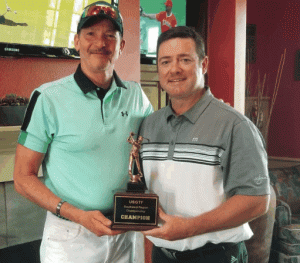 Cole Golden shot an opening round 69 against a strong field that featured several current and past USGTF champions at a windy Ridgeview Ranch Golf Course, which hosted the USGTF Southwest Region Championship May 4-5 in Plano, Texas. Tough, tricky greens and somewhat wet conditions after several days of wet weather had hit Texas earlier in the week greeted the competitors. Southwest Region director Bruce Sims and Master Lee carded 76 the first day, while Brent Davies and Chris Tyner shot 77. Grant Gulych, Jeff Kennedy, and D.B. Merrill came in with 78.
Cole Golden shot an opening round 69 against a strong field that featured several current and past USGTF champions at a windy Ridgeview Ranch Golf Course, which hosted the USGTF Southwest Region Championship May 4-5 in Plano, Texas. Tough, tricky greens and somewhat wet conditions after several days of wet weather had hit Texas earlier in the week greeted the competitors. Southwest Region director Bruce Sims and Master Lee carded 76 the first day, while Brent Davies and Chris Tyner shot 77. Grant Gulych, Jeff Kennedy, and D.B. Merrill came in with 78.
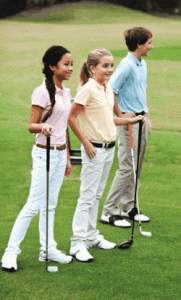 By Graham Lewis, USGTF Teaching Professional Townsend, Georgia
By Graham Lewis, USGTF Teaching Professional Townsend, Georgia
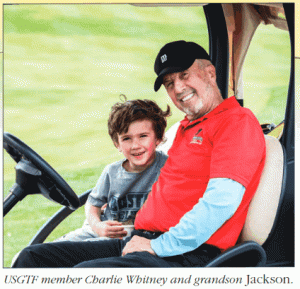 What are the first memories that you have of golf? If you started the game as a kid, they probably have to do with a family member – usually a parent – who introduced the game to you. Many golfers look back on those days with great fondness and nostalgia.
What are the first memories that you have of golf? If you started the game as a kid, they probably have to do with a family member – usually a parent – who introduced the game to you. Many golfers look back on those days with great fondness and nostalgia.




 By David Vaught, USGTF Teaching Professional Bradenton, Florida
By David Vaught, USGTF Teaching Professional Bradenton, Florida